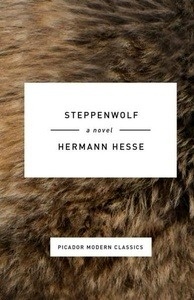Steppenwolf

Editorial Picador USA
Colección Picador Modern Classics, Número 0
Fecha de edición noviembre 2015 · Edición nº 1
Idioma inglés
EAN 9781250074829
Libro
encuadernado en tapa blanda
Resumen del libro
With its blend of Eastern mysticism and Western culture, Hesse's best-known and most autobiographical work is one of literature's most poetic evocations of the soul's journey to liberation.
Harry Haller is a sad and lonely figure, a reclusive intellectual for whom life holds no joy. He struggles to reconcile the wild primeval wolf and the rational man within himself without surrendering to the bourgeois values he despises. His life changes dramatically when he meets a woman who is his opposite, the carefree and elusive Hermine. The tale of the "Steppenwolf" culminates in the surreal Magic Theater-For Madmen Only!
Originally published in English in 1929, "Steppenwolf'"s wisdom continues to speak to our souls and marks it as a classic of modern literature.
For more than twenty years, Picador has been producing beautifully packaged literary fiction and nonfiction books from Manhattan's Flatiron Building. Our Twentieth Anniversary Modern Classics line pairs iconic books with a design that's both small enough to fit in your pocket and unique enough to stand out on your bookshelf.
Biografía del autor
x{0026}lt;P x{0026}lt;B Hermann Hessex{0026}lt;/B (1877-1962), novelista y poeta alemán, nacionalizado suizo. Premio Nobel de Literatura en 1946, es una figura de culto en el mundo occidental por su celebración del misticismo oriental y la búsqueda del propio yo, muy influenciado por el psicoanálisis junguiano. Abandonó pronto la escuela y fue autodidacta a base de numerosas lecturas. La desesperanza y la desilusión que le produjeron la Primera Guerra Mundial y una serie de tragedias domésticas, y sus intentos por encontrar soluciones, se convirtieron en el asunto de su posterior obra novelística. Sus escritos se fueron enfocando hacia la búsqueda espiritual de nuevos objetivos y valores que sustituyeran a los tradicionales, que ya no eran válidos. Es autor de varias novelas como x{0026}lt;I Peter Camenzindx{0026}lt;/I (1904), x{0026}lt;I Bajo las ruedasx{0026}lt;/I (1906), x{0026}lt;I Demian x{0026}lt;/I (1919), x{0026}lt;I Viaje al Estex{0026}lt;/I (1932), x{0026}lt;I Siddhartha x{0026}lt;/I (1922), x{0026}lt;I El lobo estepariox{0026}lt;/I (1927), quizá su novela más innovadora, x{0026}lt;I Narciso y Goldmundox{0026}lt;/I (1930) y x{0026}lt;I El juego de abaloriosx{0026}lt;/I (1943), que cada vez se hicieron más simbólicas y cercanas al psicoanálisis.x{0026}lt;/P








